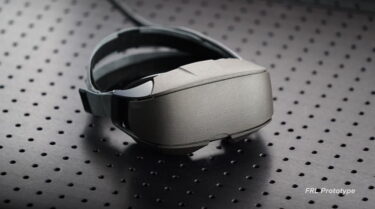VR displays: a difficult problem is still not cracked

VR displays have a fundamental flaw. A timely solution is not in sight, despite steady progress in research.
We are talking about the so-called Vergence-Accommodation-Conflict or VAC for short. Ideally, the human visual apparatus would work similarly under a VR headset as it does when looking at the physical environment unobstructed. Unfortunately, this is not the case.
Current VR displays offer only one plane of focus, which means they always display digital environments in uniform sharpness, regardless of what the eye is focusing on. This irritates the visual system and leads to a conflict between two eye mechanisms responsible for focusing. Possible consequences include eye pain, nausea, and impaired immersion. The problem is most prevalent with objects in the physical interaction area, which is crucial for virtual reality.
Artificial focus shift: problem solved, but...
Although the phenomenon has been known for a long time and much research has been done, there are no commercial devices that solve the problem yet. Meta's lead display researcher Douglas Lanman called VAC 2020 technically done. But that doesn't mean the solution from the lab is ready for mass production.
In 2018, Meta unveiled an eyewear prototype called Half-Dome that solves the problem using artificial focus shifting. Half-Dome 2 and 3 followed in 2019 (see cover image). The latter prototype used liquid crystal lenses for the first time, which reduced the complexity of the technology while improving the form factor.
However, it remains challenging to integrate the technology into consumer devices. Half-Dome raises concerns about fragility, cost and weight. According to Andrew Bosworth, Meta's CTO, his company has not yet been able to balance these factors. That statement dates to early 2021, when Bosworth tempered expectations that the technology would be introduced soon.
New lens aims to reduce complexity
At this month's Displayweek, researchers from Meta Reality Labs and Kent State University unveiled a new liquid crystal lens for headsets with artificial focus shifting, as RoadtoVR details in an article worth reading. The research itself has not yet been published.
While Half-Dome 3 required several layers of liquid crystals to achieve the desired effect, a much simpler lens of the new type could suffice in the future. In this case, the focus shift is created by changing the electrical charge on the lens surface.
Disadvantages of the new technology include a relatively slow response time and degradation of image quality toward the edges of the field of view. Like earlier solutions, the lens requires eye tracking to determine the focused object.
It is not known when the technology might find its way into commercial devices, but it is likely to be years away. Meta, meanwhile, is investing heavily in the technology, and not just on the research side. At the end of 2021, Meta acquired ImagineOptix, which specializes in the development of liquid crystal lenses.
Note: Links to online stores in articles can be so-called affiliate links. If you buy through this link, MIXED receives a commission from the provider. For you the price does not change.